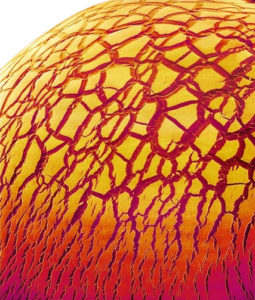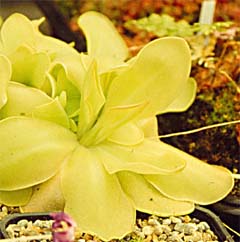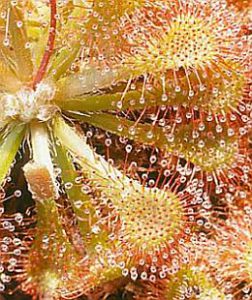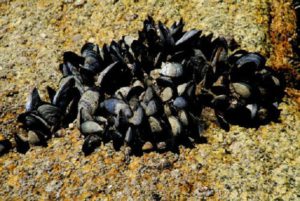No, this is not the sun but it’s a drop of glue!

Looking at this picture quickly, at a first glance you may think this is a photo of the Sun, taken by some kind of telescope. In reality it is glue … and what a glue! This drop of dried glue photographed under a microscope bears witness to a primitive glue in a settlement of Neanderthals, who lived in Germany 300/30.000 years ago. It seems in fact, that in times past pieces of birch bark used to be burn, thus obtaining a tarry, sticky substance, which according to the researchers used to glue the pieces together to build their tools.
Indeed, there are even older natural glues because … they have been produced in nature by living beings, plants (resins!) or animals, for well over 300,000 years.
There are many reasons why living beings, both plants and animals produce sticky substances: it would be simplistic to think that the plants produce resins merely to protect themselves from the elements. There are even plants that produce adhesives for food.
Drop of glue in nature

Pinguicula moranensis is a unique example of a kind of carnivorous plant with glue traps generated by invisible glands. There are dozens of species of this kind of plant spread all over the globe and in a variety of habitats.
The photo on the left shows the Pinguicula with its characteristic pastel-yellow color: it certainly does not look very carnivorous, with its soft, thick leaves and flowers that look like violets. It looks like a cactus, but it is not.
The leaves that hide the s sticky glands are incredibly efficient traps, which make pinguicole one of the most successful carnivorous plants , able to wipe out dozens of small insects per leaf
There are also other carnivorous plants that exploit the same system, with the difference that they do not hide the sticky glands like the pinguicole: on the contrary they exhibit them brazenly.
This is the case with Drosera spatulata, whose leaves are covered with very fine hairs with a sort of droplets at the ends.

The composition of these droplets is varied: they are substances only intended to entangle, entrap, stick and finally kill the captured prey.
Ultimately the natural glues produced by the special glands of these plants are deadly instruments, whose purpose is simply to trap and kill.
Drop of glue: what about the animal world?
In this case we would like to treat the subject in less obvious way and avoid the stereotype of animals that produce glue to trap, kill and eat. And for this reason we will talk about mussels, the shell fish we so like to eat with spaghetti or in a soup. Indeed!
But before ending up on our plates one has to detach them from the rocks (if they are not bred in a farm) and this is not so simple: the mussels are very firmly attached to their rock and … how do they manage this?

Well, few people know that mussels produce a “super glue”. Recent studies and research carried out in California in order to produce fewer chemical adhesives and more natural ones, have shown that the super-glue that mussels produce to remain to cling to the rocks is made of a particular anti oxidant protein. It is true that these mollusks stay attached to the rock by virtue of a bundle of filaments, but it is also true that each of these filaments ends with a kind of plaque, which is attached practically glued to the surface of the rock. These plaques are produced by the same mussels in a few minutes thanks to the secretion of some proteins. Among the proteins involved in the process, one that undoubtedly plays the main rule is mfp-3, full Dopa molecules, which act exactly like a super-glue. But that’s not all! Given the constant oxidation of the marine environment, the mfp-3 protein that is not sufficient to resist oxidation on its on, flanked by protein mpf-6, which improves the function of protecting the adhesive protein mpf-3. All this from the tasty mollusk that is the mussel!
